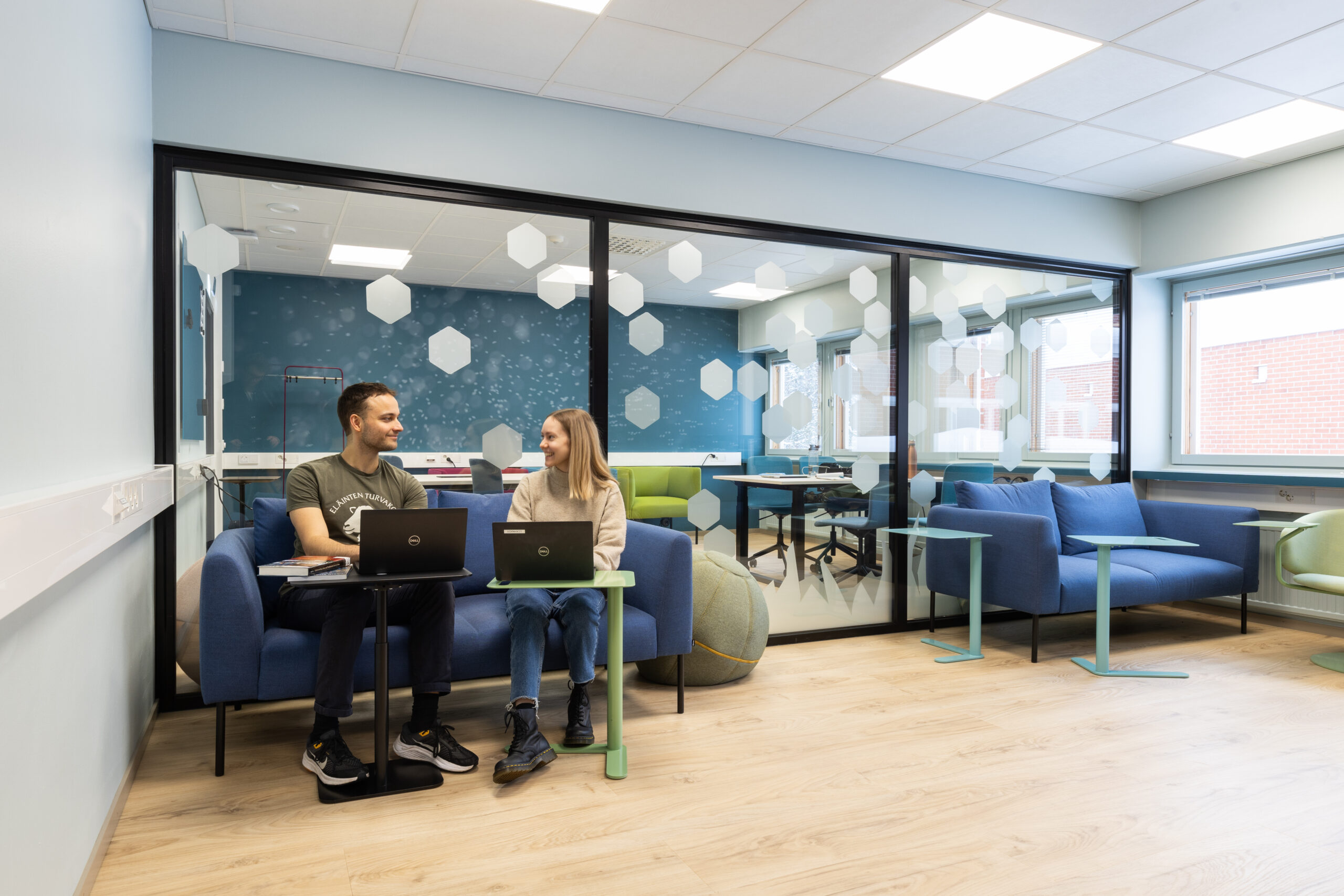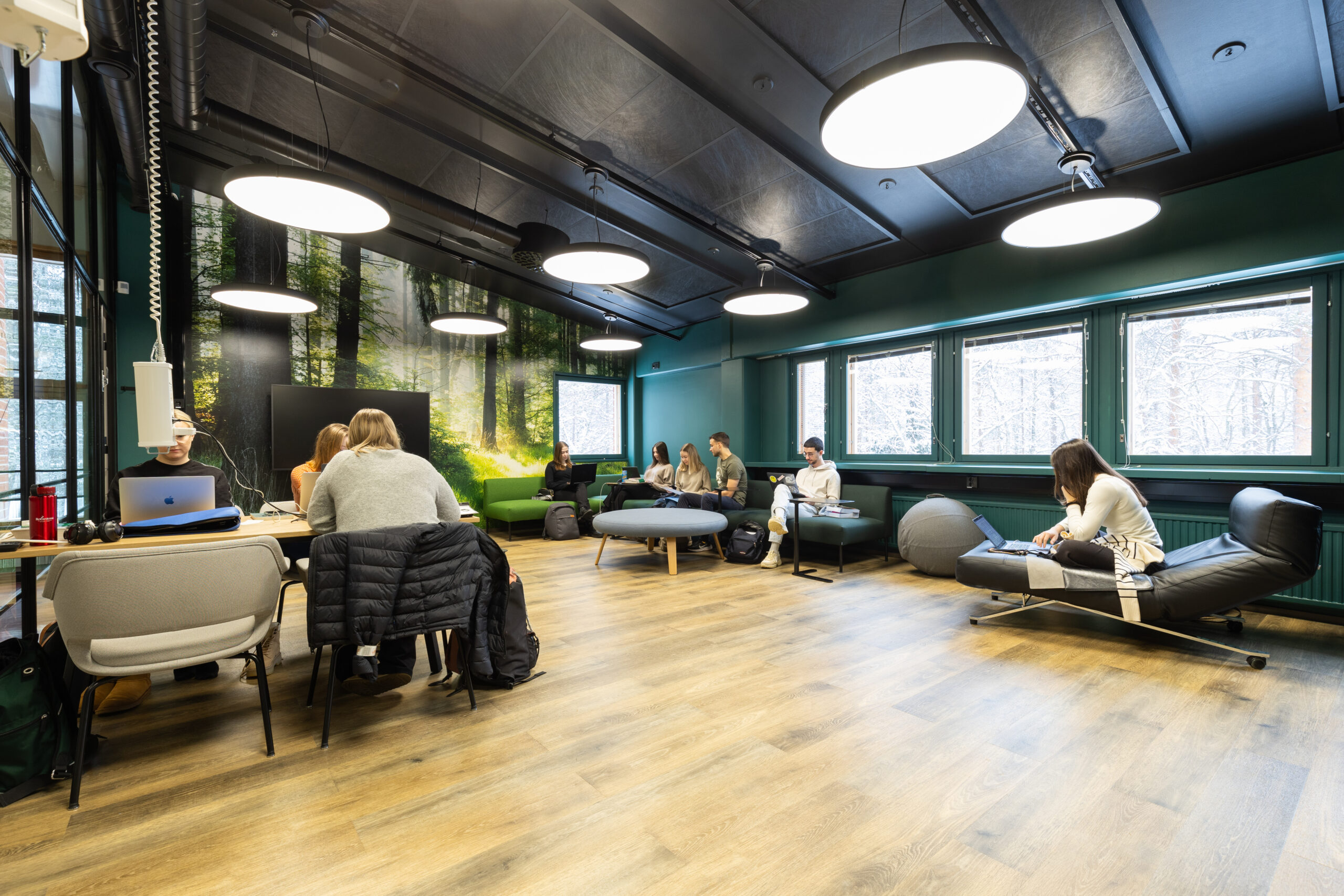
The study spaces at the Lapland University Consortium Library (LUC Library) had long been the subject of student feedback in annual surveys. There was a clear need for functional spaces to support different study methods: some students prefer to study quietly alone, others in silent peer groups, while some work noisily in teams—and everyone needs breaks. Several plans were made over the years, but in 2022, the stars aligned, and the redesign of the university library spaces in Rovaniemi began.
The renovation of the second-floor library spaces was carried out in two phases. First, a former classroom and group work area were transformed into three new types of study spaces with funding from the university. This phase was completed in summer 2023. The second phase was implemented as a demonstration project in collaboration with SYK (University Properties of Finland Ltd), which provided half of the funding, with the university covering the rest.
In the second phase, the former newspaper reading room and silent reading hall were converted into four distinct spaces, each designed to evoke a unique atmosphere. Students began using the spaces even before final touches were completed.
The main goal of the renovation was to create spaces that enhance well-being and foster a sense of community. A secondary goal was to gather insights into how well spaces support collaborative work across locations via remote connections. LUC Library also operates on the campuses of Lapland University of Applied Sciences in Kemi and Tornio.
Immediately after the spaces were completed in early 2024, a user survey was conducted, followed by a follow-up survey in autumn 2024. Respondents in both surveys expressed high satisfaction with the renewed spaces, with only minor practical improvements suggested. In the future, user satisfaction will continue to be monitored through annual customer surveys.
The changes successfully addressed a variety of needs: improved ergonomics and lighting, better accessibility, more comfortable and inviting environments, and spaces that promote community.
Looking back, the key to successful planning and implementation was user involvement and collaboration. Students — the largest user group — were actively represented in the working group, which also included members from the library, IT services, property management, and SYK. As the planning progressed, an external interior designer was also brought in.
Sustainability was considered in the design process — for example, many of the furnishings are reused.
The spaces were named in Finnish, inspired by Arctic nature and northern phenomena. “Jääleinikki” is the northernmost flowering plant in Finland, and “Kero” refers to the treeless summit of a fell. Other names include Kammi, Paljakka, Rakka, Tunturiniitty, and Lumenviipymä.

The renewed spaces are available 24/7 to students and staff of both higher education institutions, just like the rest of the library. Two of the renovated spaces are available for advance booking.
What did we learn? Always listen to users — their needs evolve. When the opportunity arises, it’s worth creating flexible and adaptable spaces that can accommodate future changes.
Susanna Parikka is the Director of the Lapland University Consortium Library. LUC Library is a joint library of the University of Lapland and Lapland University of Applied Sciences, with four libraries across three cities: Rovaniemi (2), Kemi, and Tornio.
Artificial intelligence has been used in the translation of this text.
